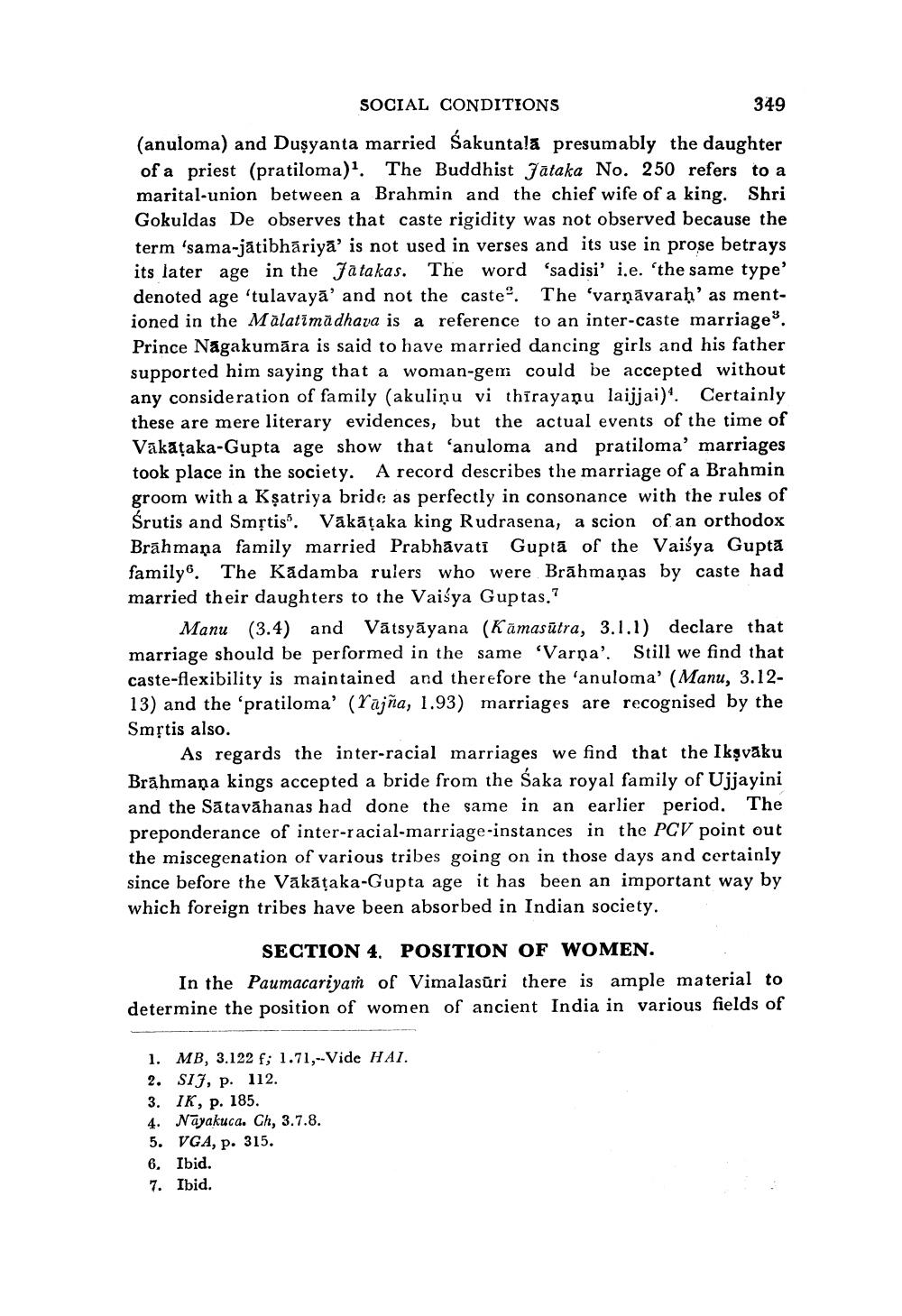________________
SOCIAL CONDITIONS
(anuloma) and Duşyanta married Śakuntala presumably the daughter of a priest (pratiloma)1. The Buddhist Jataka No. 250 refers to a marital-union between a Brahmin and the chief wife of a king. Shri Gokuldas De observes that caste rigidity was not observed because the term 'sama-jātibhāriyā' is not used in verses and its use in prose betrays its later age in the Jatakas. The word 'sadisi' i.e. 'the same type' denoted age 'tulavaya' and not the caste". The 'varṇāvaraḥ' as mentioned in the Malatimadhava is a reference to an inter-caste marriage". Prince Nagakumāra is said to have married dancing girls and his father supported him saying that a woman-gem could be accepted without any consideration of family (akuliņu vi thīrayaņu laijjai). Certainly these are mere literary evidences, but the actual events of the time of Vākāṭaka-Gupta age show that 'anuloma and pratiloma' marriages took place in the society. A record describes the marriage of a Brahmin groom with a Ksatriya bride as perfectly in consonance with the rules of Śrutis and Smrtis". Vākāṭaka king Rudrasena, a scion of an orthodox Brāhmaṇa family married Prabhavati Gupta of the Vaisya Gupta family. The Kadamba rulers who were Brahmaņas by caste had married their daughters to the Vaisya Guptas.7
349
Manu (3.4) and Vatsyāyana (Kamasutra, 3.1.1) declare that marriage should be performed in the same 'Varņa'. Still we find that caste-flexibility is maintained and therefore the 'anuloma' (Manu, 3.1213) and the 'pratiloma' (Yājña, 1.93) marriages are recognised by the Smrtis also.
As regards the inter-racial marriages we find that the Ikṣvāku Brahmana kings accepted a bride from the Śaka royal family of Ujjayini and the Satavahanas had done the same in an earlier period. The preponderance of inter-racial-marriage-instances in the PCV point out the miscegenation of various tribes going on in those days and certainly since before the Vākāṭaka-Gupta age it has been an important way by which foreign tribes have been absorbed in Indian society.
SECTION 4. POSITION OF WOMEN.
In the Paumacariyam of Vimalasūri there is ample material to determine the position of women of ancient India in various fields of
1. MB, 3.122 f; 1.71,--Vide HAI.
2. SIJ, p. 112.
3. IK, p. 185.
4. Nayakuca. Ch, 3.7.8.
5. VGA, p. 315.
6. Ibid.
7. Ibid.




